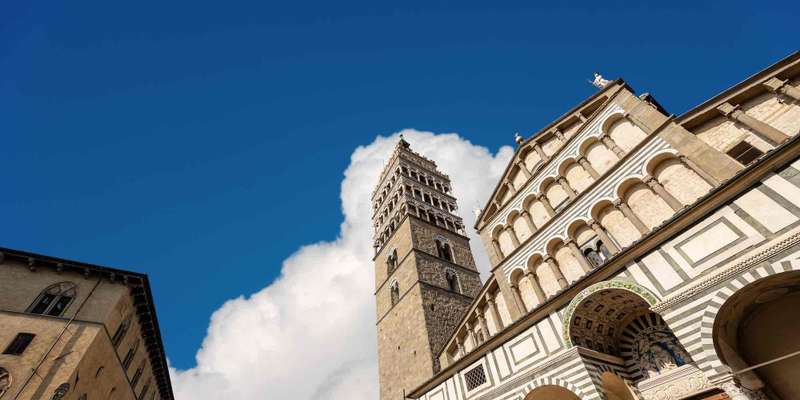- Home
- Useful Tips
- Visiting Pistoia's Cathedral...
Visiting Pistoia's Cathedral treasury presents a unique challenge many travelers overlook. While 78% of Tuscany visitors flock to Florence's crowded museums, this underrated sacred art collection remains trapped between obscurity and overwhelming richness. First-time visitors often wander aimlessly past 12th-century silver altarpieces or miss the significance of Saint Jacopo's relics simply because they lack context. The frustration mounts when you realize you've spent precious vacation time deciphering Latin inscriptions instead of appreciating masterpieces. Worse still, arriving at peak hours means competing with school groups for glimpses of delicate ivory carvings. These missed opportunities transform what should be a profound cultural experience into another checklist item. Understanding how to navigate this compact but dense collection makes the difference between a forgettable stop and encountering some of Tuscany's most spiritually significant medieval art.


Decoding the Treasury Layout – What Not to Miss
The cathedral's treasury room packs seven centuries of devotional art into a space smaller than most hotel lobbies, making strategic navigation essential. Start with the showcase piece – the 13th-century silver altar of Saint Jacopo, a gleaming masterpiece illustrating the saint's life through intricate repoussé work. Local docents often linger near this centerpiece, offering free insights if you arrive before noon. Don't let the modest size fool you; the southern wall displays Byzantine ivories that survived the Fourth Crusade, their delicate details best appreciated with the provided magnifying glasses. Many visitors overlook the reliquary cabinet's lower drawer, which contains the so-called 'Tears of the Madonna' – 14th-century rock crystal vessels that held holy water. Budget at least 20 minutes for the textile collection in the climate-controlled annex, where the embroidered cope of Pope Leo X reveals Renaissance craftsmanship rarely seen outside Vatican collections.
Timing Your Visit Like a Pistoia Native
Pistoians know the treasury's rhythms intimately – follow their lead to enjoy contemplative moments with the art. Wednesday mornings see the fewest visitors, as most tour groups schedule cathedral visits for weekends. Arrive precisely at 10:15 AM to catch the sunlight illuminating the stained glass above the reliquaries, creating a kaleidoscope effect on the silver artifacts. The post-lunch lull (1:30-2:45 PM) offers rare solitude, though some display cases may be temporarily closed for conservation. Locals avoid the first Sunday of each month when free admission draws families. If visiting in summer, the 6 PM twilight hour provides cooler temperatures and magical shadows dancing across the medieval fresco fragments. Keep an eye out for the unannounced 'apertura straordinaria' evenings when the treasury stays open until 10 PM with special lighting – the cathedral caretakers usually post these dates on the wooden doors facing Piazza del Duomo.
Understanding Hidden Symbolism in the Collection
The treasury's true depth reveals itself when you grasp the coded language of medieval sacred art. That peculiar silver lobster on Saint Jacopo's altar? It's not decorative – Pistoia's 12th-century fishermen donated it as a votive offering after surviving a storm. The seemingly random animal carvings on the ivory pyxises form a bestiary representing virtues: the fox symbolizes resurrection in Etruscan tradition. Look closely at the 'Madonna del Latte' painting's frame – the wormholes aren't damage but intentional additions representing the wounds of Christ. Local art historians emphasize checking the backs of processional crosses, where crusader knights often scratched their names. These layers of meaning transform curious artifacts into windows of medieval spirituality. The cathedral occasionally offers free 'symbolism workshops' where volunteers demonstrate how to 'read' a reliquary like a 14th-century pilgrim would – inquire at the diocesan office next to the baptistery.
Pairing Your Visit With Nearby Hidden Gems
Complement your treasury experience with these underrated sites within 200 meters that most tourists miss. The Cathedral's underground excavations (access through the gift shop) reveal Lombard-era foundations and a preserved medieval wine cellar where clergy once stored communion wine. Five minutes west, the tiny San Giovanni Fuorcivitas church houses a pulpit by Giovanni Pisano that art scholars consider superior to his more famous Pisa works. For context on the treasury's silversmithing tradition, peek into the still-operating Bartaloni workshop on Via degli Orafi, where craftsmen demonstrate techniques unchanged since the altar of Saint Jacopo was created. End your route at Pasticceria Parenti for their 'Torta Celeste' – a pine nut cake recipe dating from when the cathedral's relics first went on display. These stops create a cohesive narrative of Pistoia's artistic heritage without the transportation hassles that plague larger Tuscan cities.
